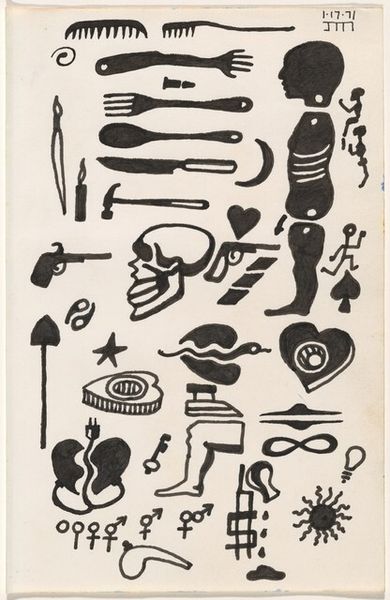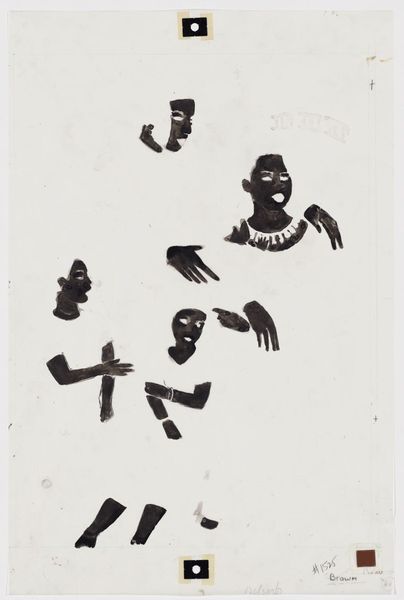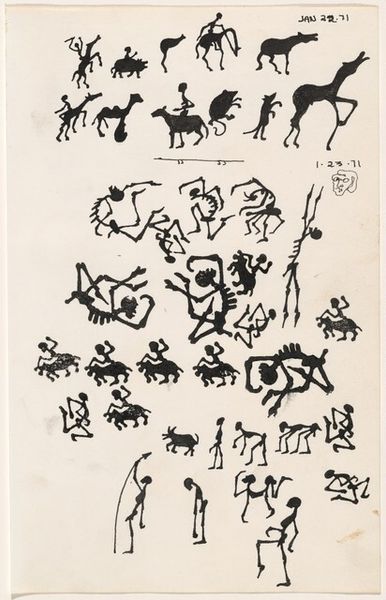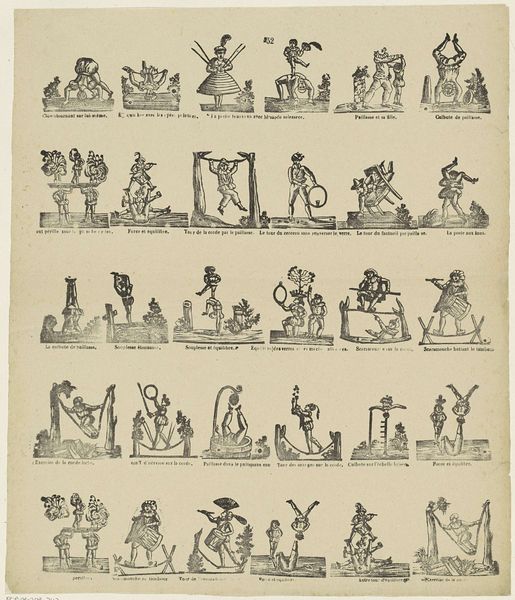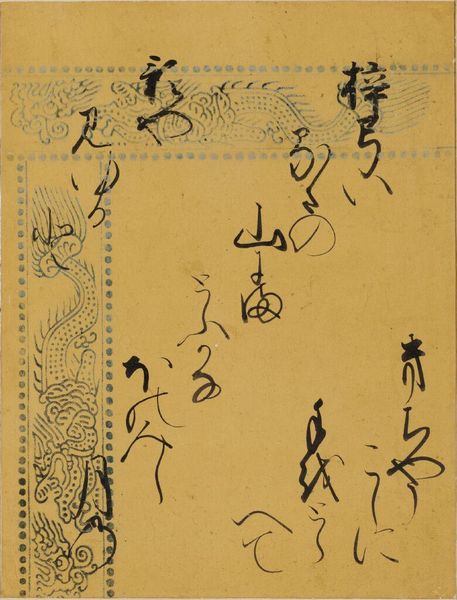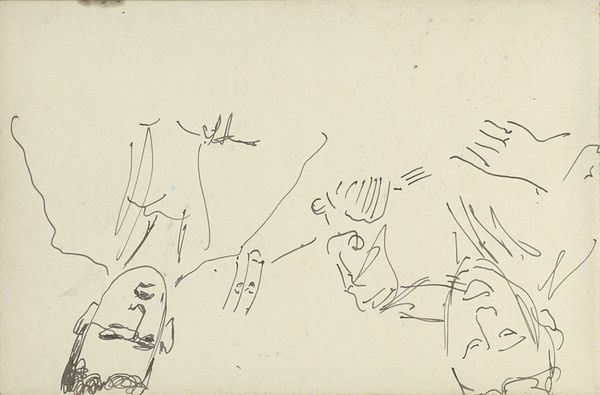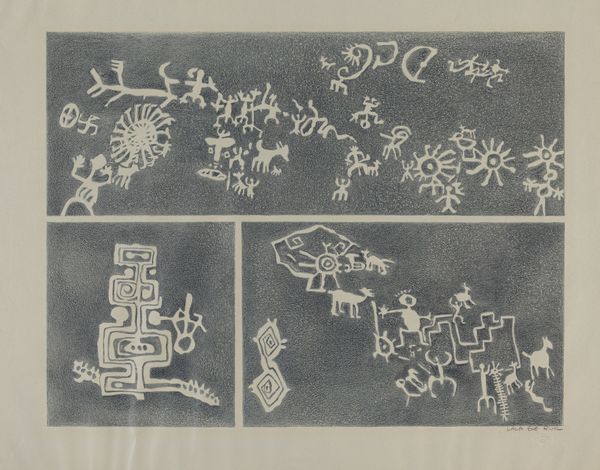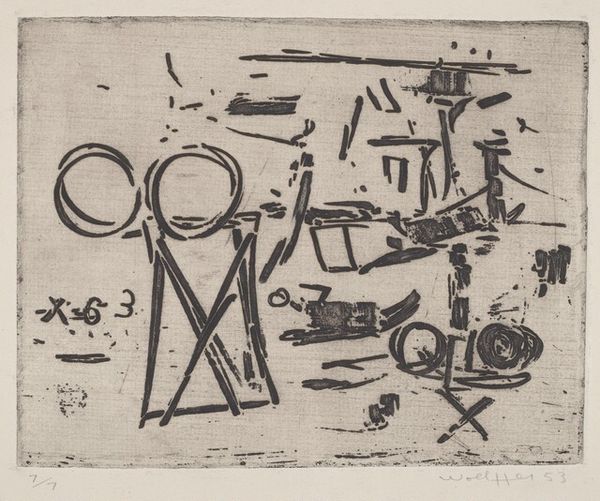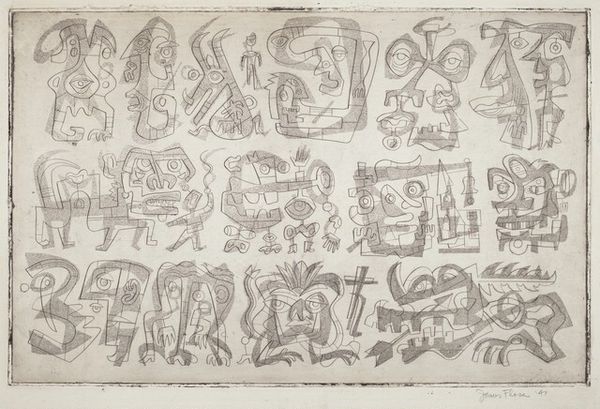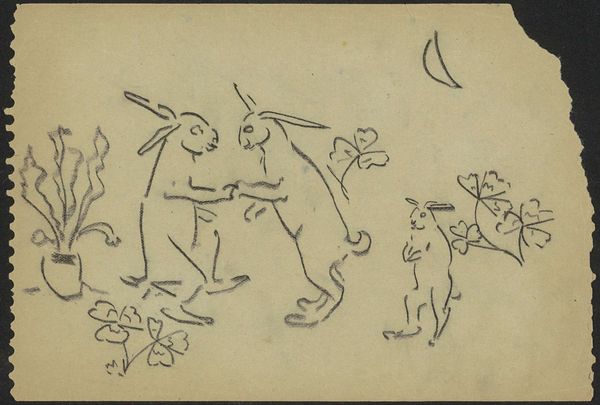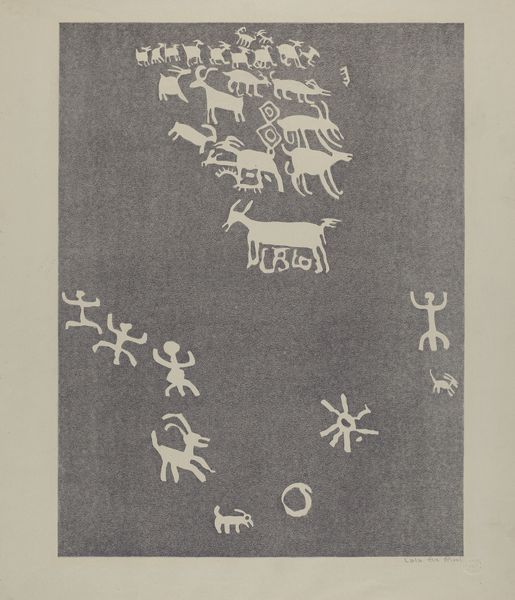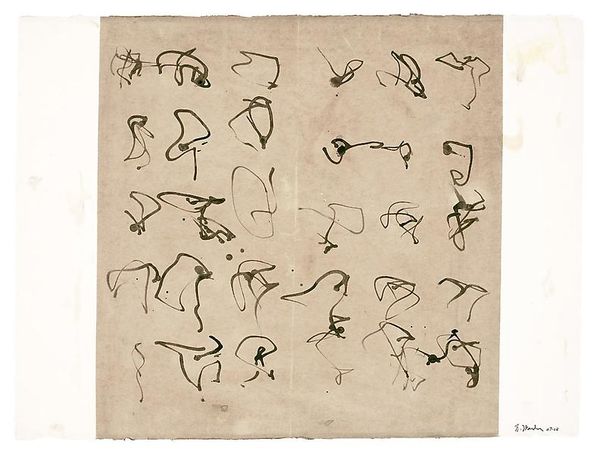![Untitled Jan 21, 71 [study for "tattoo" book] by James McCracken Jr.](/_next/image?url=https%3A%2F%2Fd2w8kbdekdi1gv.cloudfront.net%2FeyJidWNrZXQiOiAiYXJ0ZXJhLWltYWdlcy1idWNrZXQiLCAia2V5IjogImFydHdvcmtzL2VkZTI4ODE3LTQxNmUtNDllZS1iNGVjLWEyNzA4NmZhZTk4My9lZGUyODgxNy00MTZlLTQ5ZWUtYjRlYy1hMjcwODZmYWU5ODNfZnVsbC5qcGciLCAiZWRpdHMiOiB7InJlc2l6ZSI6IHsid2lkdGgiOiAxOTIwLCAiaGVpZ2h0IjogMTkyMCwgImZpdCI6ICJpbnNpZGUifX19&w=828&q=75)
drawing, ink
#
drawing
#
figuration
#
ink
#
black-arts-movement
Copyright: National Gallery of Art: CC0 1.0
James McCracken Jr. made this study in January 1971, presumably with ink on paper, and it's like a page ripped from a tattoo artist's sketchbook. The marks are economical, each line a bold statement defining these dancing skeletons. It's all about the immediacy of the gesture. You can almost feel the scratch of the pen, the ink bleeding slightly into the paper. The texture isn't just visual; it's tactile, hinting at the physical act of drawing. Look at the skeleton breakdancing at the bottom right, the way the ink pools in the curves of the ribcage. The heavy black ink makes them feel solid and full of life, not ghostly at all. It’s a macabre party! McCracken Jr.'s bold lines remind me of Guston's later, cartoonish style. But where Guston grapples with weighty themes, McCracken Jr. seems to embrace a lighter, more playful approach to the dance of death. It shows how different artists can use similar techniques to explore very different ideas, and proves that art is always a conversation across time.
Comments
No comments
Be the first to comment and join the conversation on the ultimate creative platform.
